Recent Articles
Popular Makes
Body Types
2018 Audi Q5 Road Test and Review
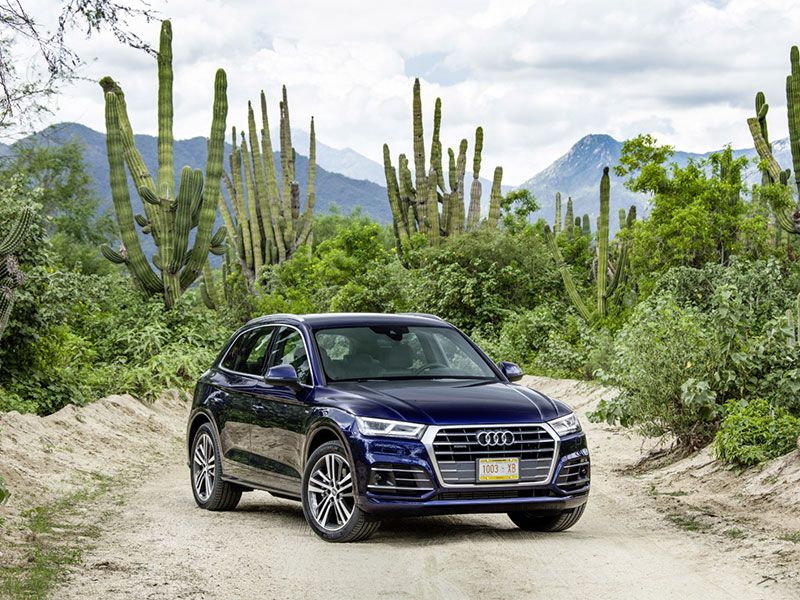
2018 Audi Q5 exterior hero ・ Photo by Audi
Since its inception in 2008, the Q5 has catapulted in importance to the Audi brand. Sales immediately beat projections and it is now the best selling Audi vehicle in America. When the first Q5 came out, the “luxury midsize crossover” was barely a thing—only the BMW X3 and Mercedes GLK really existed. But in the interim sales in the segment have exploded, which means competitors are springing up from everywhere. The Jaguar F-PACE, Lexus RX, and Acura RDX all want to eat a piece of Audi’s pie, as does Benz’s much-improved GLC (formerly known as the GLK). Bimmer’s next-gen X3 also waits on the horizon, as does Volvo’s XC60. Competition is fierce, so Audi has to come out with guns blazing.
So, for the second-generation Q5, Audi is loading it with safety suites, loads of technology, and an improved dynamic ride. To learn more about the new Q5, I sampled this new Audi in Cabo San Lucas, at the tip of Mexico's Baja peninsula, on driving surfaces that ranged from cobblestones and paved new highway to switchbacks and backcountry dirt roads.
Right place, right time.
The Audi Q5 was the right vehicle at the right price at the right time. Just when America was beginning to realize it wanted a luxurious smaller SUV, Audi pulled back the sheets on the Q5. Unknowingly, Audi soon defined the segment standard. Given its success—and Audi’s recent design protocol to evolve, not revolutionize—the new Q5 looks very much like the last. The footprint stays about the same, its length increasing an inch (from 182.6 to 183.6 inches)—with half of that growth coming between the front and rear axles.
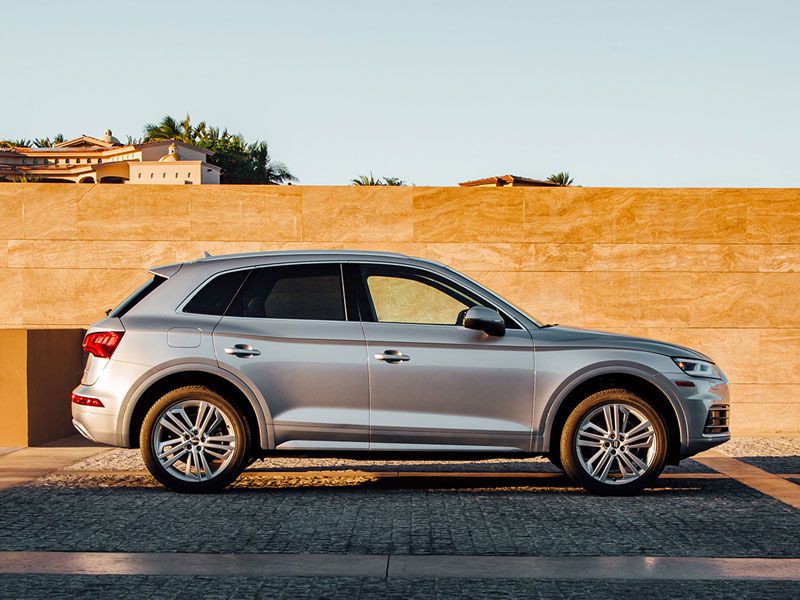
Photo by Audi
More space, everywhere.
Audi took that extra size and smartly engineered more space where it counts most: front-row headroom, second-row legroom and, of course, cargo capacity. While the additional 10 millimeters of headroom is nice, the extra 10mm of rear legroom is more evident, and makes fitting a child seat in the second row easier. More importantly for an SUV, the cargo capacity has increased by almost two cubic feet with the rear seat down, so the Q5 now boasts over 60 cubic feet of stowage behind its front seats.

Photo by Audi
New Dynamic Suspension
One of the goals with the Q5 was to improve the driving dynamics, so Audi constructed a new 5-link front and rear suspension—similar to that found in the new Allroad. Driving on the Baja coastline—with its challenging cobblestone road surfaces and potholes that can swallow a smart fortwo whole—the 2018 Audi Q5 offered impressive comfort. Perhaps more impressive, however, was its performance on the curvy streets and switchbacks: The Q5 had little to no body lean in corners, and that's both noteworthy and appreciated in an SUV with elevated ride height.
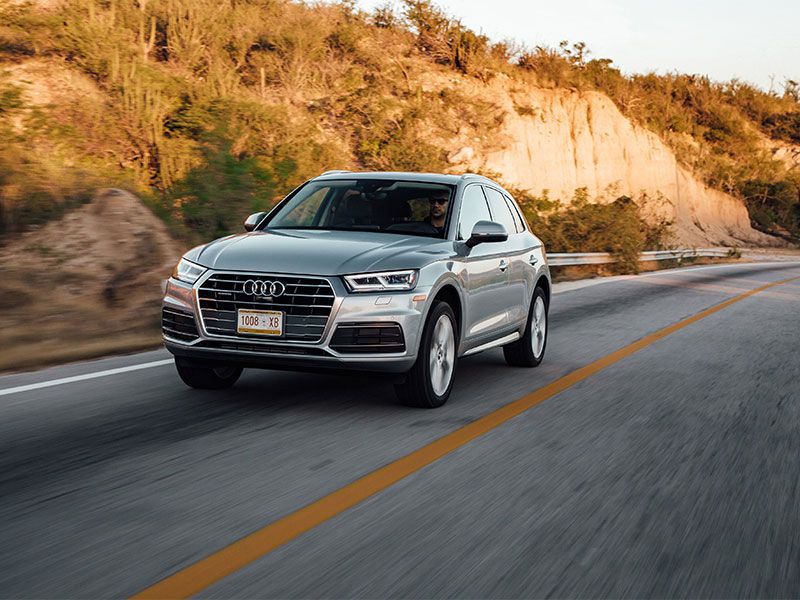
Photo by Audi
But no air suspension?
Unlike with the Audi A4 Allroad, you cannot get air suspension on the Q5. This means that its ride height cannot be adjusted—regardless of setting, you will retain the 8.2 inches of ground clearance. However, there is an adaptive suspension available: Using the Drive Select button on the center stack, you can switch between Comfort and Dynamic modes. Drive Select also allows you to choose five different modes: Comfort, Auto, Dynamic, Off-road, and Individual. Air suspension is available in the more upmarket SQ5.
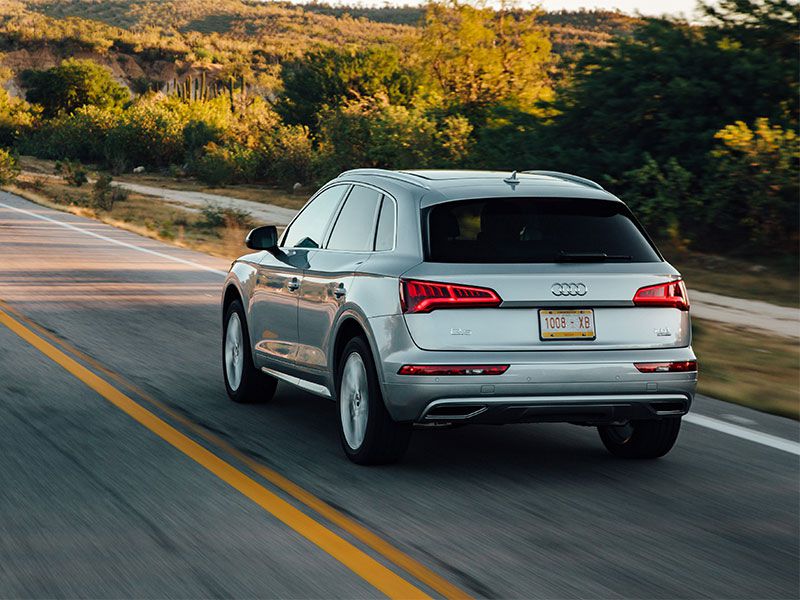
Photo by Audi
Smaller engine, but more power.
The new 2018 Audi Q5 only gets one engine this time around: Audi’s ubiquitous 2.0-liter TFSI 4-cylinder powerplant. The redeveloped engine generates 252 horsepower and 273 lb.-ft. of torque, 32 more horses and 15 more lb.-ft. of torque than before. The real improvement, however, comes in its acceleration. Equipped with a 7-speed S-tronic dual-clutch transmission, the Q5 now zips from 0 to 60 mph in just 5.9 seconds. That’s one full second more quickly than the last-gen 4-cylinder, and it’s even faster than the last gen’s V6.
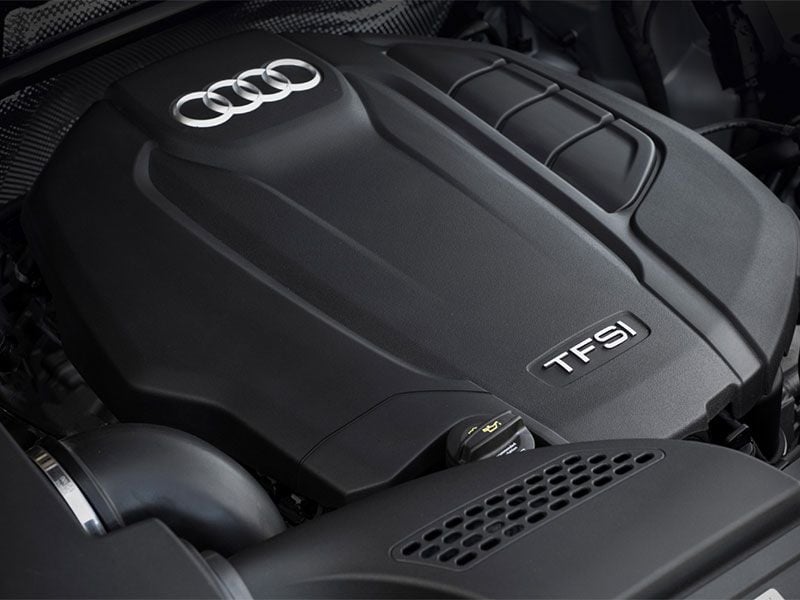
Photo by Audi
Quattro with Ultra
Sure it sounds like an Avengers villain, but Quattro with Ultra technology really is something special. It launched in the A4 Allroad, and now you're seeing it mass-marketed in a volume vehicle for the first time. It is a predictive, not reactive, all-wheel-drive system that can seamlessly switch between front-wheel drive or AWD within 200 milliseconds, depending on driver demands and/or road conditions. This means better fuel economy as the SUV doesn’t drive in thirstier AWD mode unless conditions—or your aggressive driving style—demand it.
The switch is seamless; you don’t feel it. We had a powertrain engineer in the car with us, showing us via a tablet when the vehicle was switching between AWD and front-wheel drive, and the transfer was unnoticeable. Bottom line: It offers all the benefits of AWD with better fuel economy—or as an Audi exec eloquently put it: "When you need it, you already have it."

Photo by Audi
Better living through technology.
The 2018 Audi Q5 boasts class-leading technology. Numerous options include the Virtual Cockpit (more about this later), Google Earth navigation, MMI touch (where you can handwrite nav instructions), hands-free power tailgate, a head-up display, online traffic information, voice control, Apple CarPlay and Android Auto, inductive charging, LED headlights (standard Xenon plus), LED taillights with dynamic rear turn signals, ambient LED lighting (with 30 color settings), heated steering wheel, top view camera, heated and ventilated seats, LTE standard connectivity WiFi hotspot, video calls with full HD, and a crisp 19-speaker/755-watt B&O sound system.

Photo by Audi
Virtual Cockpit
We’re big fans of Audi’s new Virtual Cockpit, and as it moves its way down the lineup (originally appearing in Audi’s R8 supercar) it instantly improves every vehicle it touches. Essentially, VC converts the traditional gauge cluster into a single high-res (1440 x 540 pixel) LCD display. At 12.3 inches wide, the VC lets you set up all sorts of info directly in your eyeline. Between two large digital gauges (speedo and tach), you can display radio info, fuel economy, nav directions, etc. Or better yet, shrink the speedo and tach and push the Google Earth map into the large space between them. Brilliant.
Not only is the map therefore much closer to your direct view, it also then frees up the 8.3-in. center display for your passenger to control the radio, Spotify, Apple CarPlay or Android Auto, or whatever other entertainment feature they choose.
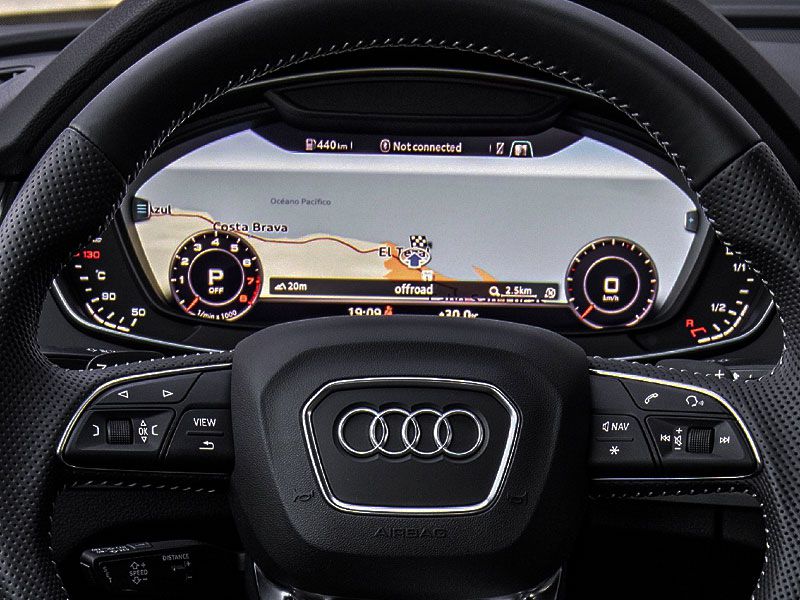
Photo by Audi
Safety Suites
The new Q5 comes standard with Audi Pre-Sense Basic and Pre-Sense City to protect you from most collisions under 52 mph. Should you choose the Premium Plus, Prestige, and/or Driver assistance packages, this Audi suv comes loaded with just about every safety suite under the sun. You get Audi Side Assist, Pre-Sense Rear, vehicle exit assist, rear cross-traffic assist, adaptive cruise control (with stop & go and traffic jam assist), traffic sign recognition, active lane assist, and turn assist. No other vehicle in the segment offers such a vast array of safety technologies.
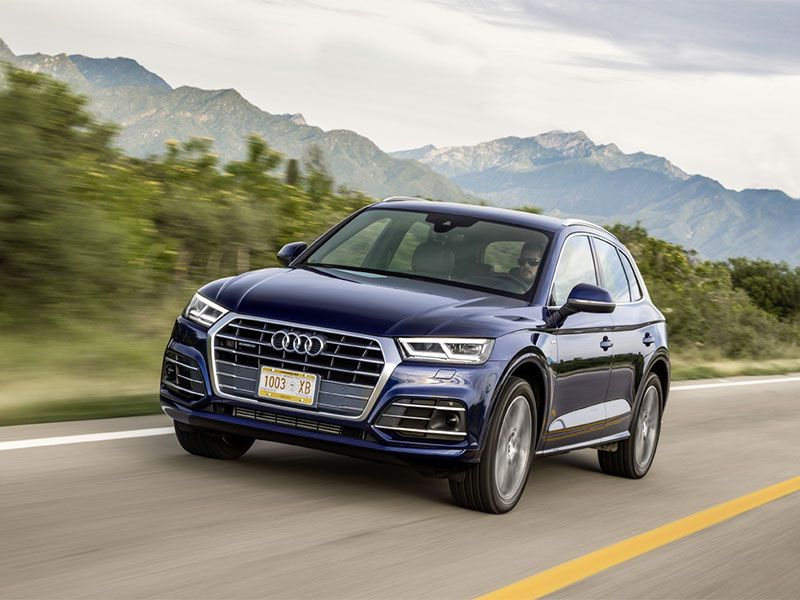
Photo by Audi
Made in Mexico
It’s not just for Mexico’s roads that Audi chose Baja to launch its Q5—the nation will also build the SUV for its European, North American, and Chinese markets. The $1 billion San José Chiapa factory is Audi’s first in Mexico, and is one of the most advanced in the Americas. The plant will employ over 3000 workers, of which one-third were specially trained in Audi’s Ingolstadt, Germany, headquarters to ensure the Four Rings’ rigorous quality standards.
Although the Audi Q5 will be hitting European showrooms in January, we won’t be seeing the 2018 Q5 here in the U.S. until spring. Pricing has yet to be announced.

Photo by Audi